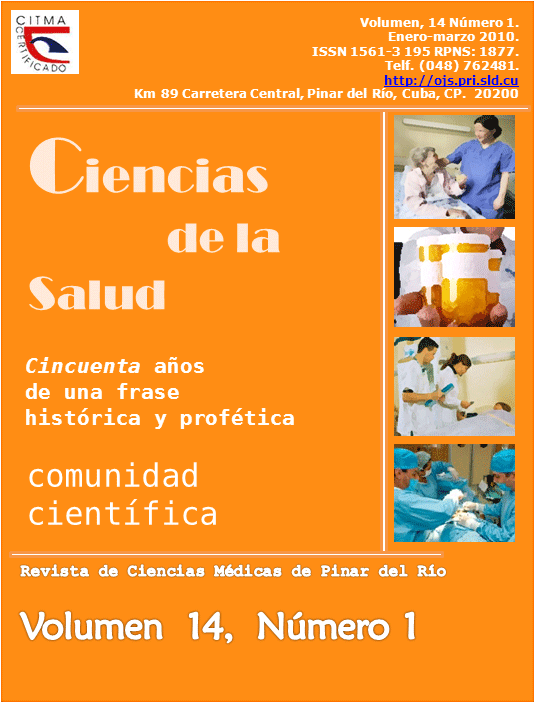Medical rounds in the community
Abstract
During the universalization process different forms of organizing learning process are introduced, being Education in Work the most important. Medical rounds in the community is a modality in the new contexts, the rounds must be prepared, organized and directed by the comprehensive professor of the Doctor's Office. The medical rounds can be conducted in the University Polyclinic, houses, maternal and old people's homes; having several stages: an exhaustive organization of the activity, a previous preparation (individual study, collection of data, clinical method), patient's presentation (familial and hygienic-epidemiologic context), collective analysis (teaching pyramid), conclusions (evaluate, correct, encourage, elucidate, demonstrate, advise, contribute, emphasize and confirm), individual study and self-learning. This activity, having these characteristics in Primary Health Care, facilitates the integration of the clinical, environmental, familial and hygienic-epidemiologic aspects where the patient becomes involve.Downloads
References
1. Ministerio de Salud Pública. Normas de trabajo metodológico de la Educación Médica Superior. Ciudad de la Habana: MINSAP; 1990.
2. Ilizástegui Dupuy F. Educación en el trabajo como principio rector de la educación médica cubana: taller nacional. Ciudad de La Habana: ISCM-H; 1993.
3. Ministerio de Salud Pública. Estrategia Docente en Medicina General Integral. Ciudad de la Habana: MINSAP; 1990.
4. Checa González A. Quehacer médico en las artes plásticas. Avances médicos de Cuba. Ciudad de la Habana: MINSAP .1998; (16):58.
5. Ministerio de Salud Pública. Dirección Nacional de Especialización. Viceministro de Docencia. Programa de Especialización, en Medicina General Integral. Ciudad de la Habana: MINSAP; 1990.
6. Rodríguez A A, Gallardo Gálvez J L. EL pase de visita docente asistencial. Revista de Ciencias Médicas La Habana[revista en internet] 2000,[citado Ene 2009]; 6 (2): Disponible en: http://www.cpicmha.sld.cu/hab/vol6_2_00/hab100200.htm
7. Pichs L A. Carpeta Metodológica del 5to Semestre Especialidad: Propedéutica Clínica y Medicina Interna. Ministerio Educación Superior; 2006.
8. Pichs L A. Carpeta Metodológica 6to Semestre Especialidad: Medicina Interna. Ministerio Educación Superior; 2006.
9. Rosell Puig W. Medios de enseñanza. La Habana: Pueblo y Educación; 1989.
10. Cuba. Ministerio de Salud Pública. Del Trabajo Docente. Resolución 15-88. Cuidad de la Habana, MINSAP. 1988, Pág. 11-12.
Published
How to Cite
Issue
Section
License
Authors who have publications with this journal agree to the following terms: Authors will retain their copyrights and grant the journal the right of first publication of their work, which will be publication of their work, which will be simultaneously subject to the Creative Commons Attribution License (CC-BY-NC 4.0) that allows third parties to share the work as long as its author and first publication in this journal are indicated.
Authors may adopt other non-exclusive license agreements for distribution of the published version of the work (e.g.: deposit it in an institutional telematic archive or publish it in a volume). Likewise, and according to the recommendations of the Medical Sciences Editorial (ECIMED), authors must declare in each article their contribution according to the CRediT taxonomy (contributor roles). This taxonomy includes 14 roles, which can be used to represent the tasks typically performed by contributors in scientific academic production. It should be consulted in monograph) whenever initial publication in this journal is indicated. Authors are allowed and encouraged to disseminate their work through the Internet (e.g., in institutional telematic archives or on their web page) before and during the submission process, which may produce interesting exchanges and increase citations of the published work. (See The effect of open access). https://casrai.org/credit/



